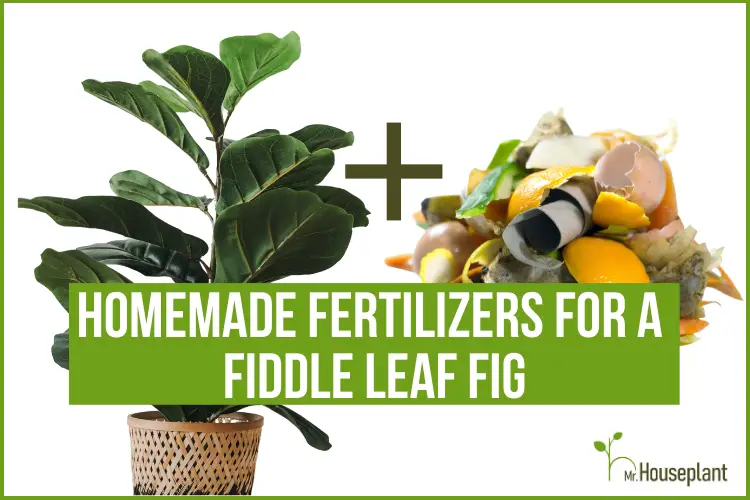
Do homemade fertilizers work like a charm on your Fiddle Leaf Fig? Or can they do more harm than good? The following article will guide you through some common homemade fertilizers for a Fiddle Leaf Fig.
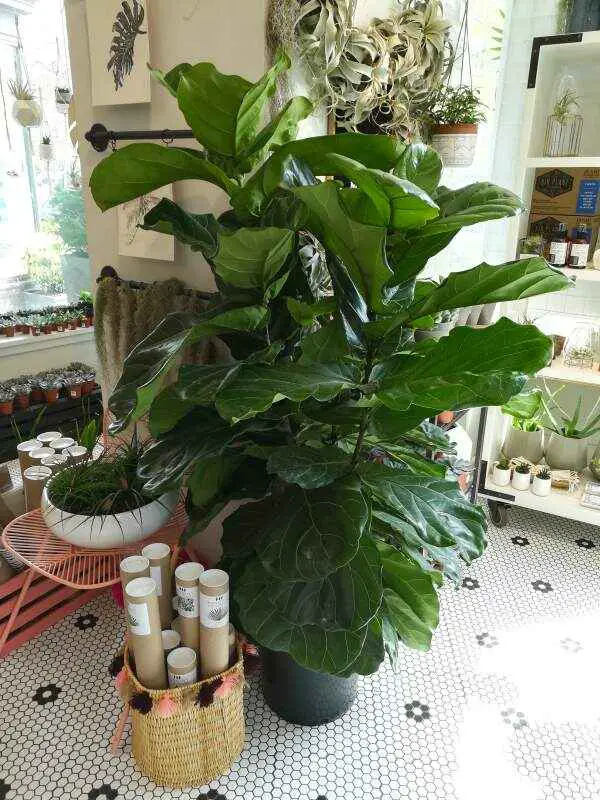
Fiddle Leaf tree
The best homemade Fiddle Leaf Fig fertilizer is compost. These are only a few benefits of compost:
- Increases soil fertility
- Improves soil structure
- Improves moisture retention and proper drainage
- Provides plant nutrients
- Promotes growth of microorganisms that contribute to plant growth
- Helps manage waste
- Stimulates healthy root development
- Promotes soil fertility
- Reduces fertilizer use
Compost consists of components rich in organic matter that decomposed to the point where the nutrient content is stable. This decomposed organic matter becomes fertilizer for growing plants.
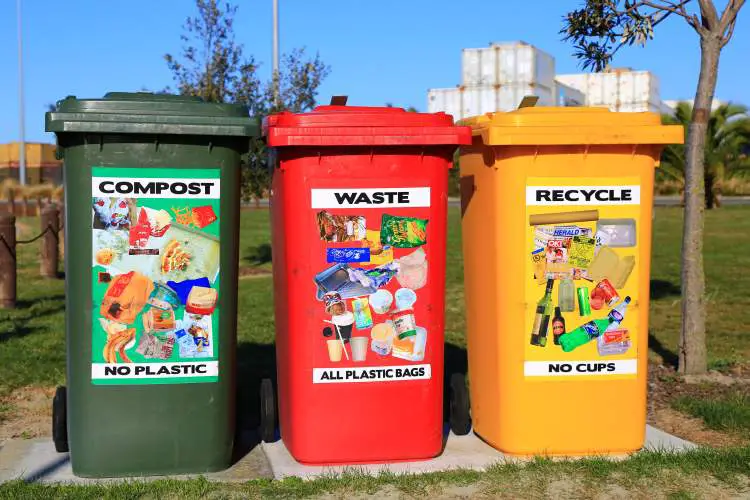
Compost bin and recycle bins
An old-fashioned way of using manure-based compost works best. However, most of us don’t have access to animal manure. So, going for this old-school cure often isn’t an option. In case you have the luxury to make manure-based compost, make sure you give it a few months to age. Fresh manure and houseplants do not mix! Uncomposted manure added to plants will likely result in microbial contamination. Therefore, aged or composted manure should be used.
For the rest of the plant parents that have no way of getting their hands on manure, here’s what can be added to compost:
- Coffee grounds
- Eggshells
- Banana peels
- Weeds
- Straw
- Faded flowers
- Fruit and vegetable scraps
- Leaves
- Shrub trimmings (nonwoody)
It’s easy to notice that a lot of kitchen waste can be turned into something useful. But note that not all leftovers are suitable for making compost. Here’s what NOT to use for compost:
- Dairy products
- Whole eggs
- Meat
- Bones
- Grease
- Sick/infected leaves, weeds, plants
- Pet feces (they can transmit diseases)
So why do composts make the best homemade fertilizers for a Fiddle Leaf Fig? That’s because they come with rich macrobial life extremely beneficial to plant healthy growth. However, there is a shortcoming to it. Homemade fertilizer rarely contains all the micro and macronutrients plants need. So you may want to consider going for a synthetic one instead.
Any chemical or natural fertilizer will have a certain NPK (nitrogen, phosphorus, potassium) ratio. Best Fiddle Leaf Fig fertilizers have a 3-1-2 NPK ratio. This is pretty easy to check with commercial fertilizers but is not a given when it comes to homemade fertilizers. The nutrient content of compost and manure varies greatly. It rarely has an appropriate balance to supply your plants with all they need. If you need or want to fertilize your houseplants, it’s best if you use a non-homemade fertilizer. Choose one that has a good N-P-K ratio, such as the Sill fertilizer, which has a ratio of 9-3-6.
Are Coffee Grounds Good For Fiddle Leaf Fig?
Yes, coffee grounds are good for Fiddle Leaf Fig, but only if they are composted first. However, this is only true if the plant is nutrient deficient in nitrogen. Here are some benefits of coffee grounds:
- Contain nitrogen
- Encourage the growth of microorganisms that are essential for plant growth
- Make a fine addition to compost
- Help reduce waste
- Easily accessible
Coffee grounds should not be used as homemade fertilizers for a Fiddle Leaf Fig unless you are positive your plants lack nitrogen. There is a reason why you should exercise caution. That’s because it is possible to have too much of a good thing. Yes, nitrogen is the most needed nutrient for a healthy tree. But feed your plant too much nitrogen and it may even lead to fertilizer burn and cause serious harm or even kill your plant.
The solution is to use coffee grounds occasionally, through composting. The plant will get all nutrients from the soil if you repot it once a year and use the right soil type. So there’s no reason to use too much fertilizer and risk damaging the plant.
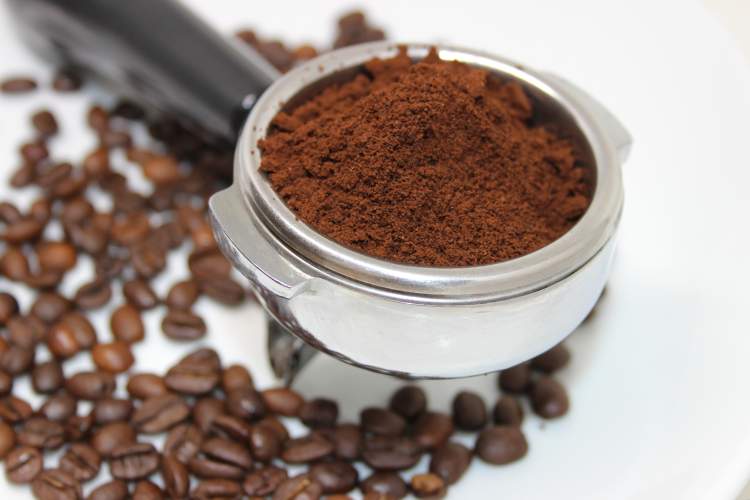
Ground coffee and fresh coffee grounds
How to use coffee grounds as a DIY fertilizer? Simply add them to your compost, so they can break down. Do not just add coffee grounds to your potted plants. If you drink coffee frequently and keep adding the grounds to your pots frequently, it can lead to the soil becoming anaerobic. It can also gradually change the PH of the soil. This can happen even faster if the pot is small.
If you’re worried that coffee grounds make the soil too acidic, there is good news. The pH value of used coffee grounds is between 6.4 and 6.7 which is slightly acidic. Most indoor plants enjoy slightly acidic soil, so this works well.
Are Eggshells Good For Fiddle Leaf Fig?
Yes, eggshells are good for Fiddle Leaf Figs but only if they are composted first and if your plant is deficient in calcium. Since calcium is the main nutrient found in eggshells, don’t risk giving too much of it to your plant.
The way you use eggshells as homemade fertilizer also makes a difference. If you just bury them in soil, it won’t do much for your plant. Eggshells don’t break down that fast, even in a compost bin. You can just add them to your compost. Or, to speed up the breakdown process, place eggshells on a baking sheet. Dry them out in the oven so they become brittle. Then blend them into fine powder. This will make it easier for beneficial bacteria to break it down faster. Add this powder to your compost and you’ve got yourself a nice addition of calcium that you can eventually use inside the plant’s pot.
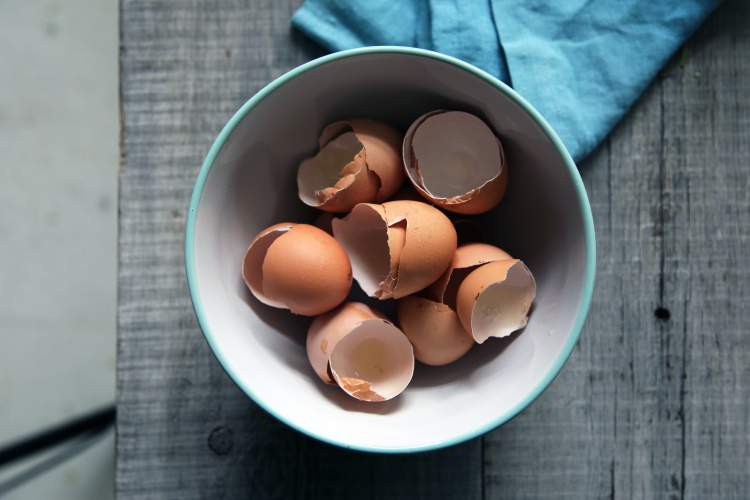
Eggshells
Is Banana Peel Fertilizer Good For Fiddle Leaf Fig?
Yes, banana peel fertilizer is good for the Fiddle Leaf Fig plant, if it’s composted first and if the plant lacks potassium. Potassium is one of the main nutrients needed for healthy plants and one of the main ingredients found in banana peels. Here are all the nutrients banana peels contain:
- Potassium
- Calcium
- Phosphorus
- Sulphur
- Magnesium.
But it appears that nutrients are not the main reason why banana peels are such a popular DIY fertilizer. This popularity comes from the fact that banana peels are such a common food waste. Most households don’t know what to do with banana peels so they look for alternative ways to use them. And that’s where homemade banana fertilizer comes into play.
To use banana peels as fertilizer, pop the banana peel into your compost bin together with other compostable ingredients. Or chop it up into small pieces to help it break down faster.
Are banana peels the best homemade fertilizers for a Fiddle Leaf Fig? The answer is no but they certainly make a great addition to composts for all plants, including Fiddle Leaf Fig trees.
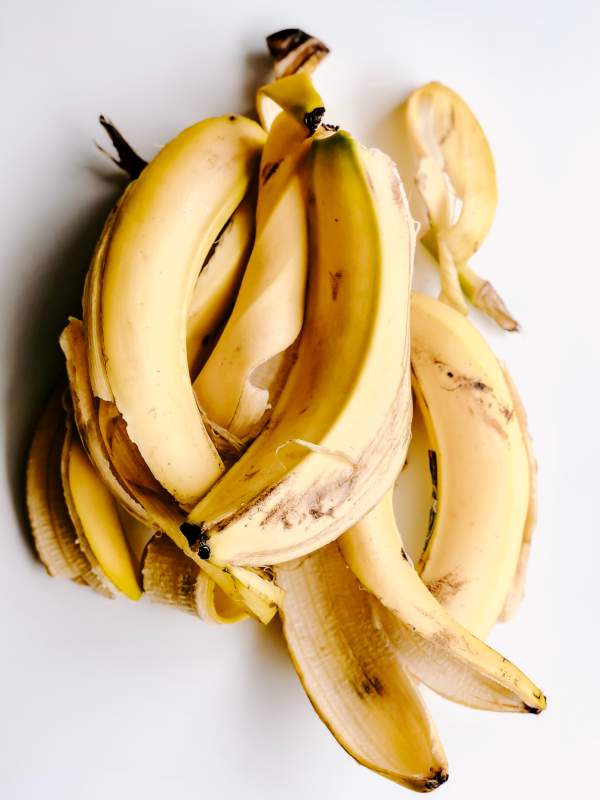
Banana peels
Is Rice Water Good For Fiddle Leaf Fig?
The short answer is yes – rice water is good for Fiddle Leaf Fig. It is believed to be beneficial for its rich nutrient content. It contains carbohydrates, proteins, vitamins, and other minerals beneficial to plant growth. The two most common hormones employed in stimulating plant growth (gibberellin and auxin) are also reported to be present in washed rice water.
But the complete answer is somewhat unattainable. The reason is that in-depth scientific studies on benefits of fertilizing with rice water are very scarce. Some recent research shows that rice water can be used as a plant nutrient source. There’s no doubt about its nutrient content.
But is it one of the best homemade fertilizers for a Fiddle Leaf Fig? And can it replace Fiddle Leaf Fig tree liquid fertilizer? The answer is no. No single ingredient and no homemade liquid plant food can replace liquid fertilizers with the right NPK ratio. Washed rice water could reduce the need for synthetic fertilizer, especially in fermented form. But it certainly can’t replace fertilizer that contains the right ratio of macronutrients.
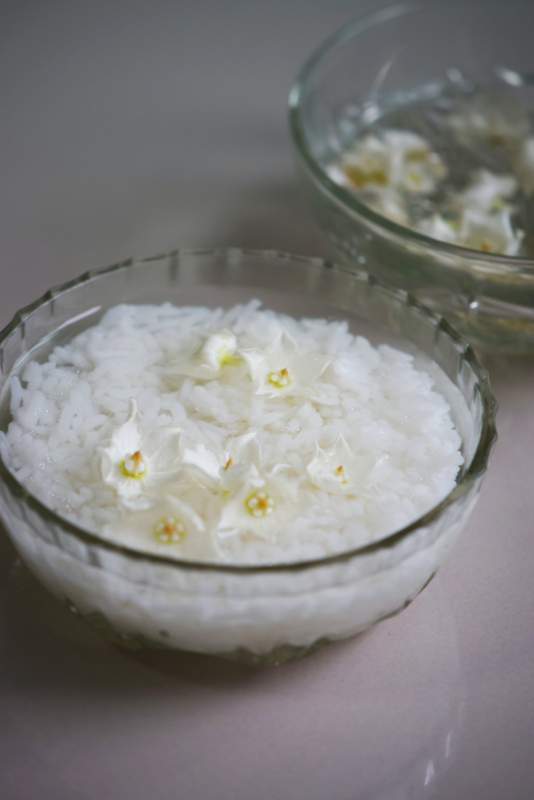
Rice in bowl
While you’re looking for homemade slow-release fertilizers to fertilize Fiddle Leaf Figs with, you’ll come across many recipes. Lots of them will claim to perk up your plants. But homemade fertilizers are not magic potions! They can be beneficial but they can also be ineffective and unsafe. Remember that excessive uptake of nitrogen weakens the plant. That means that too much of ingredients like coffee grounds may actually hurt the plant.
Yours Truly,

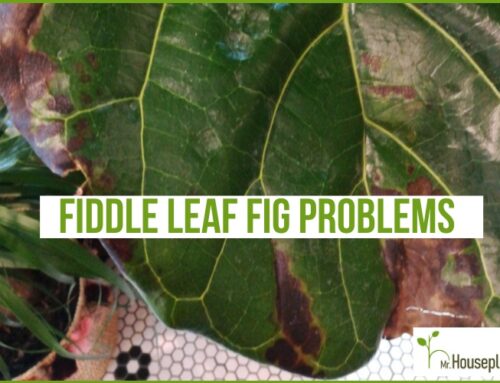
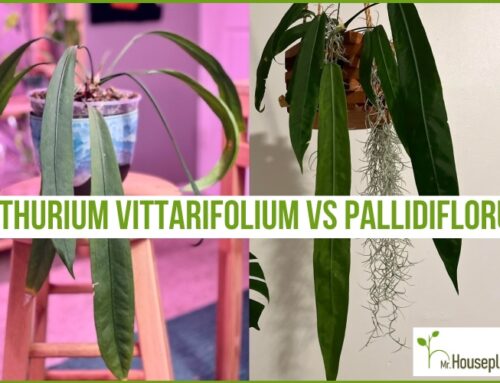
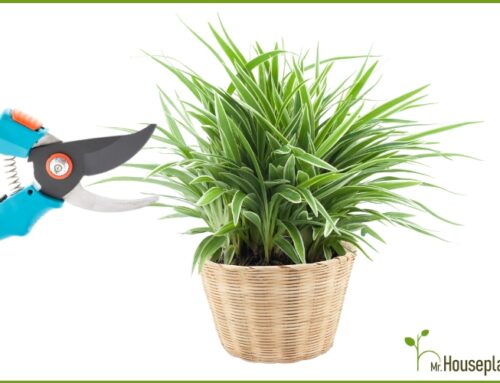


What should i mix using inorganic chemicals, like super phosphate, pot nitrate, urea, mag sulphate, etc.